A non distinctive, often hard to identify member of the Xerocomus genus that can be quite variable in colour.
Home / Mushroom Guide /
Suede Bolete
Suede Bolete
| Mushroom Type | |
| Common Names |
Suede Bolete (EN), Yellow Cracked Bolete, Cap Tyllog Melfedaidd (CY), Podgrzybek Zajączek (PL), Molyhos Tinóru (HU) |
| Scientific Name |
Boletus / Xerocomus subtomentosus |
| Synonyms |
Boletus subtomentosus, Ceriomyces subtomentosus |
| Season Start |
Jun |
| Season End |
Sep |
| Average Mushroom height (CM) |
5-10 |
| Average Cap width (CM) |
5-10 |
Please note that each and every mushroom you come across may vary in appearance to these photos.
Cap
5-10 cm. Starting convex and then flattening out. Very variable in colour from dark brown to tan to olivaceous to yellow and even red. The surface is finely hairy (tomentose) or smooth as it ages and can crack, revealing a yellow or white flesh.
Pores
Angular, pale to bright yellow and slightly running down the stem (decurrent). Can turn blue where bruised. Xerocomoid Boletes have pore tubes that will generally split in half if the cap is torn apart, other Boletes pore tubes will normally separate and remain whole leaving them unbroken.
Stem
5-10 cm long, 1-2 cm diameter. Can be cylindrical, tapered or club shaped. Usually pale yellow with a pink/brown base and can have course reticulation at the apex. Can look fibrous with tiny floccules.
Flesh
White to pale yellowish, sometimes blueing slightly in the cap but not always. The base of the stem is pinkish brown.
Possible Confusion
Rusty Bolete (Xerocomus ferrugineus) is very similar but lacks the pinkish brown in the stem base and has whiter flesh.
Poplar Bolete (Xerocomus silwoodensis) is again similar but has a more pronounced recticulum and grows with Poplar.
Goldenthread Bolete (Xerocomus chrysonemus) has wider pores and yellow hyphal cords joined to the base.
Taste / Smell
Sharp and acidic.
Frequency
Thought to be fairly common but probably misidentified and often under recorded.
Spores
Olive brown. Subfusiform to ellipsoid.
Other Facts
Not the best edible when fresh but like many Boletes, the flavour and texture can be improved by drying.


 (8 votes, average: 4.13 out of 5)
(8 votes, average: 4.13 out of 5)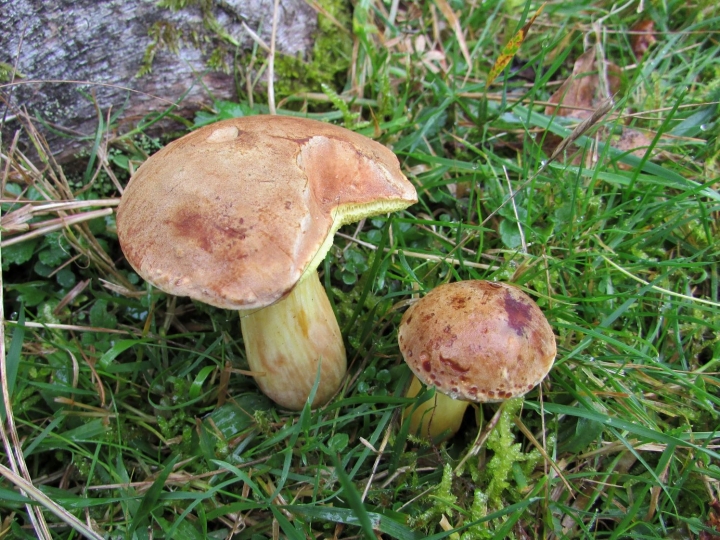
















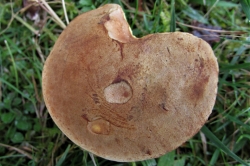
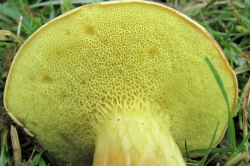
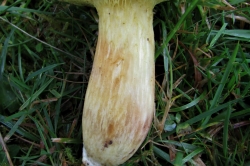
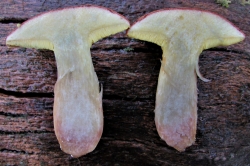
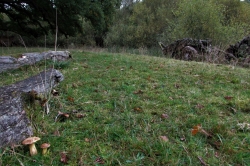






Leave a Reply